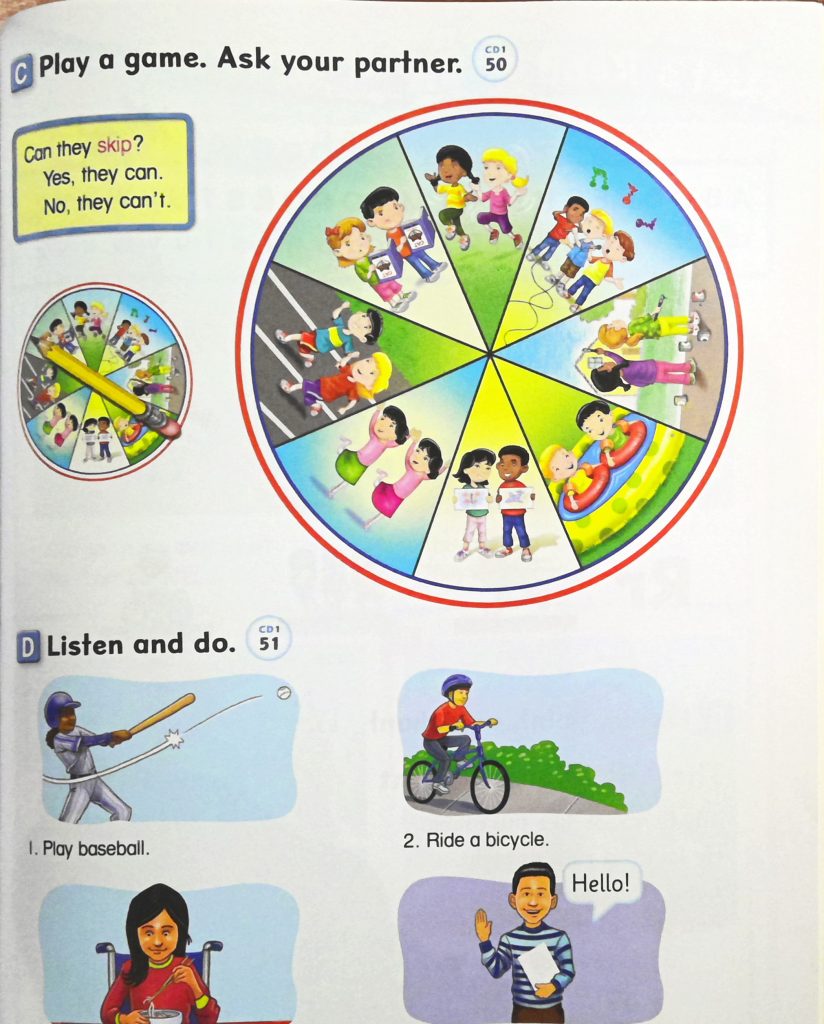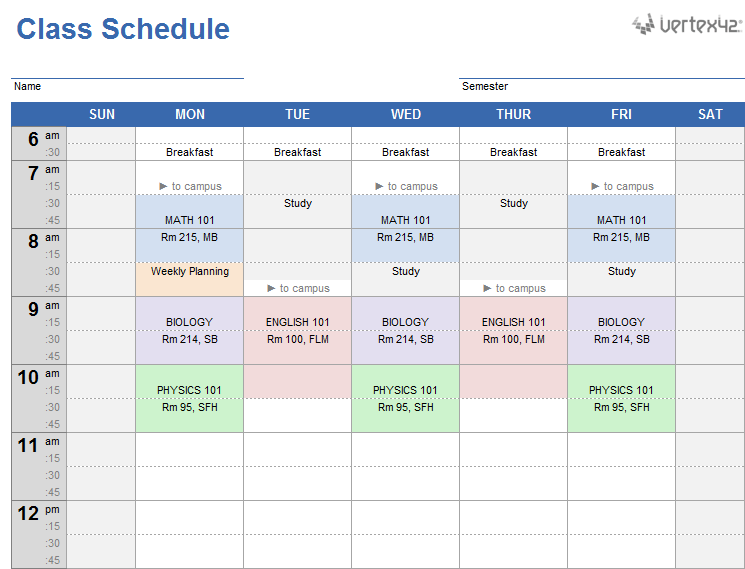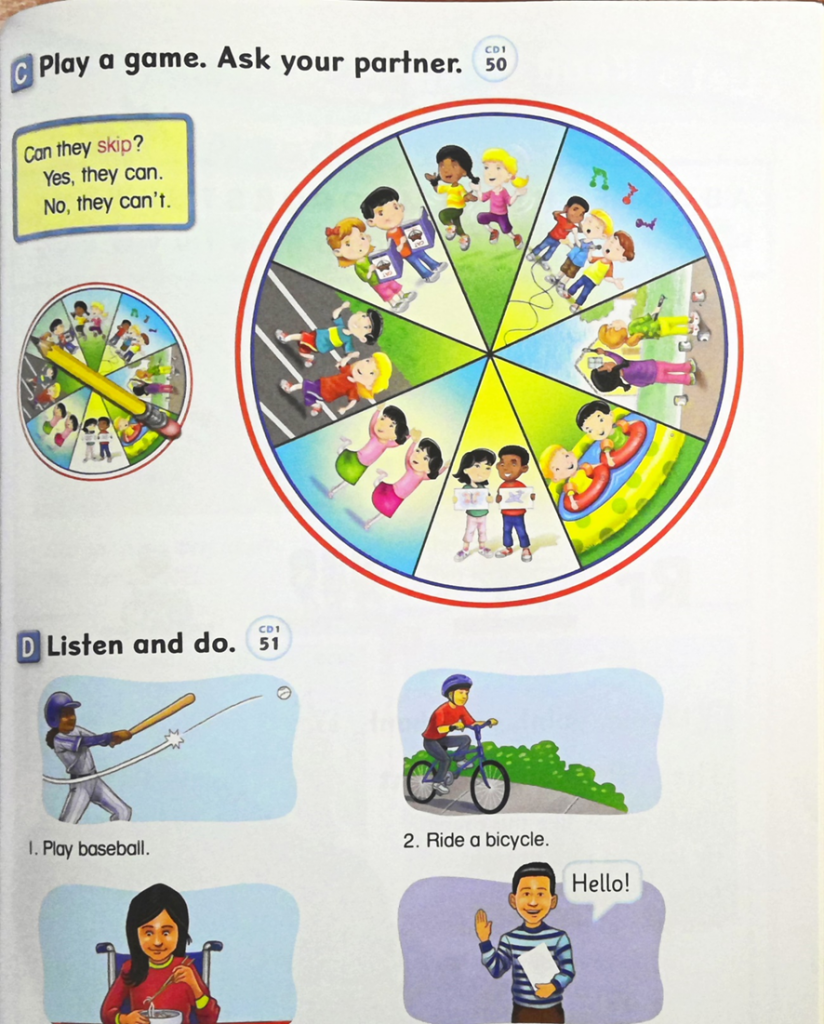ENGLISH 390- TESOL Methods
Textbook Evaluation
The textbook I will be evaluating is “Let’s Go!” 2, 4th Edition student book Written by R. Nakata, K. Fraizer, B. Hoskins, and C. Graham. This book will be used in my 4th grade classroom for students at a middle intermediate to high intermediate level, however it is suitable for grades K-6. In the next sections, you will find an overview of the textbook as a whole as well as an in-depth analysis of one chapter.

I hope this blog offers some insight into this book and help you in choosing and/or adapting a textbook to your class.
Evaluation Overview
To evaluate the textbook as a whole, I looked through table of contents as well as each chapter to see what kind of activities it offers.
Each chapter generally follows a pattern of learning new words, listening and repeating, an ask and response activity, and one more activity in the form of a song or chant.
The textbook does a great job of dividing the chapters into sections that involve words, phrases, and activities for things they would do in their lives, for example, “At School” and “Things I can Do” are some chapter topics. The depictions of everyday situations and prompts could be really useful in regards to building strategic competence in conversations.
However, the textbook will likely need some supplementation. I noticed that there are fairly no writing or reading activities, in fact, most are speaking competency activities. This may not be a problem for you if you are teaching students in lower grades, but for my purposes, students in grade 4, I think that more writing practice such as fill in the blank paragraphs, or choosing the correct word(s) from a word bank.
Overall, I think this textbook would be sufficient in my classroom, however I would need to have supplemental activities ready for writing and reading competency.
Sample Chapter
I will be delving deeper into chapter 3, titled “Things I Can Do”. This chapter works on making commands and creating sentences with verbs. The chapter starts off with a “Let’s Talk” activity, which depicts conversational scenarios with exact responses for students to repeat.

The majority of the chapter consists of activities such as those depicted above; There are a lot of call and response activities. This further shows that the Audiolingual method is large at play in this textbook.
Additionally, in chapter 3, it is apparent that the content builds off of previous chapters. The sample sentences are longer, and they also provide more complex sample sentences. As the chapter progresses, there is less guidance in making sentences. One of the last activities involves students making inferences based on pictures on a wheel. They must spin a pencil on the wheel, and when it lands on a picture, they must determine whether or not the person depicted is able to skip (pictured below).

Chapter 3 does a nice job of scaffolding content to help students make commands, use action verbs and phrases, and make more complex sentences. On the other hand, I think it would be even more helpful to have more task-based activities rather than audiolingual or repetition in order to show competency.
Sample Activities
Adapted Activity
Class description: This activity is designed for a low-intermediate class.
Objectives: By the end of the activity, students will be able to:
- Identify and write locations
- Describe their day using time indicators
- Understand and be able to replicate language/abbreviations used on official documents.
What authentic materials will be used?

Students will use a copy of a sample class schedule, and then create their own using their own information
How does this activity replicate language students will use outside the classroom?
At school, especially at the beginning of each year, students will have to read their class schedules. Their teachers, and even family members may ask them about their classes. Additionally, this document has important personal info. If there must be any changes made, they will have to know how to communicate with their guidance counselors or other staff.
Describe the activity using the steps T and Ss will take.
- T will pull up a copy of the sample schedule to display and describe it as an example.
- T will explain how to fill out the personal info and explain how to put the classes for each day at the correct time. T will have added a space for student number and school name on the schedule. There will also be a discussion about popular abbreviations and what they mean on the schedule.
- Students will receive a blank copy of the schedule to fill out
- After they are done, Ss will get with a partner and describe their class schedules to each other. They will be asked to ask their partners the following questions:
- What is your earliest class?
- What is your latest class?
- What is your schedule before lunch?
- What time is your favorite class? Where is it located?
Game Based Activity
This activity will serve as an informal, formative assessment for my students.
Learning Objectives: Describe different occupations
Be able to identify different occupations based on descriptive language and task descriptions of the occupation
Create dialogue that mirrors real life scenarios/situations about different occupations.
Game description: The classroom will be split into two groups for teams. during the game, a student from each group will come up as a pair. They will be given note cards with different occupations and brief descriptions of them. Then, they role play a conversation about that occupation, or a situation that is related to it. The students should include basic information of the jobs that will hint at what occupation they are referencing. For example, a conversation about feeling unwell. The role play may go something like this:
student 1: I don’t feel so well today.
student 2: What’s the matter?
student 1: My nose is runny and my throat is scratchy.
student 2: Sounds like you are sick. You should go to someone that can give you a check up. This person will be wearing a stethoscope and white coat and can give you medicine.
Students in the audience will be in two teams. There will be a moment of discussion, then whichever team raised their hands first to guess will share their answer, jeopardy style. The correct answer in this above example is “Doctor”.
This will asses the learning object because by the students’ performances, I will be able to evaluate if they know basic information about different occupations. By evaluating the other students’ guesses to the game, I will be able to know if they can identify the jobs, and also if their peer’s descriptions/hints were effective.
Sample Lesson Plan
Things I like to do
| Instructor | Kanya Edmonds |
| Class/Level | This is for a low to mid intermediate class at the fourth grade level. |
| Time | 50 minutes |
| Topic | The topic revolves around hobbies and things students like to do in their free time. |
| Skill(s) in Focus | Speaking competency Strategic competency Usage of past, present , and future tense |
| Goal(s) | Describe the general goals of the lesson- what is that you want the students to learn? Students will learn how to describe their hobbies outside of school using the past, present, and future tense. |
| Objectives | By the end of the lesson students will be able to: Describe their favorite activity Share some activities that can be done outside of school Use the past, present, and future tense to say what they like to do outside of school Discuss with a partner their favorite activities. |
| Materials | Let’s Go! Textbook Authentic material handout for partner conversations Authentic material past,present, future review sheet |
Class Description
Warm up (18 minutes)
Students will work individually
Objective # 1
- On the board, the teacher will write the warm up instructions: Good Morning! Take a seat and write in your journal about what you did over the weekend.
- SS will enter the classroom and take their seats.
- Students will have 10 minutes to write their response in their journals
- During the last 5 minutes of the activity, the T will call on 1-2 students to briefly share what they did over the weekend if they would like.
- T will put on a 1 minute timer for ss, during which they will have to put their journals away, take out any supplies they need, etc. before having to be quiet in their seats for the next task.
Learn the words (8 minutes)
This will include the whole class
Objective # _2
- T will use activity A from page 68 of Lets Go! (apendix a) in a powerpoint format.
- T will say the vocabulary word of different activities with a motion that goes with the word and ss will repeat
- After going through each word 3 times, T will stop reading the word, and will instead perform the motion associated with that activity. Ss will call out which vocabulary word is being shown.
- T will ask students if they have any activities that they can share to the class.
- T will call on students and ask them to come up to the board, writing different activities down and making a list.
Past, Present, Future Review (10-14 minutes)
Whole class/individual
- T will write on another part of the board: Past, Present Future for a call and response activity
2. T will call out: When something already happened, that is the…?
If something is happening right now, that is the…?
If something will happen, that is the…?
Students will call out either Past, present, or future for each call. T will repeat this multiple times/ until every student calls out the correct answer.
3. Students will complete the Past ,present, and future review sheet individually. (appendix c)
Partner Conversation (10 minutes)
Students will work in pairs for this activity
Participation Framework
Objective # 3,4_
- Students will receive a worksheet with the following:
What do you like to do after school?
What will you do on holiday break?
What is something fun you did last week?
What does your partner like to do after school?
What will your partner do during holiday break?
What is something fun your partner did last week?
- SS will first answer the questions on their sheet individually, and then take turns asking their partners and having a conversation.
- Ss will turn their papers in to T as class is ending.
Appendix
A. Textbook activity

B. Worksheet
Worksheet-tesol-lessonC. Past, Present, Future review
PastPresent-future-review-tesolConversation Partner Experience
My conversation partner experience provided me with a new perspective of what it is like to be an English Language Learner attending a University. My conversation partner’s name was Ibrahim. Although Ibrahim and I did not have as many conversations as I would have liked, I learned a lot from the experienced. Ibrahim is a native of Saudia Arabia who was here with his wife and children while she studied at another Virginia School, William and Mary. When I asked Ibrahim about what he was studying at ODU, we ran into our first hiccup in understanding. We ended up coming to an understanding that he was studying some type of security, as he is a navy officer in his country. However, I was still not totally sure of his exact major. This gave me an experience that I will keep in mind as an ESL teacher. It is hard enough being in a new environment and learning a new language, but not having the language to communicate something can be frustrating and embarrassing, as it seemed Ibrahim felt this way. As a teacher, I want to do my best to make my students feel comfortable. Ibrahim stated that a big aspect of E`nglish that he felt he had a lot to learn about still was “slang” or everyday informal words. I understood this as wanting the vocabulary that the majority of people use day to day. With that being said, in my future classroom I want to provide a mix of teaching academic words as well as informing students of the more informal ways to say things.
Teaching Philosophy
In my English Language learner classroom, I want to teach students in a way that will best prepare them for speaking English in everyday life. My classroom will be an environment in which students will be made to feel comfortable making mistakes and trying new things using the target language. In my experience learning a language, this was a key; in order to learn how to use a language successfully, one will have to have the courage to engage in conversations in the target language and not be afraid of making mistakes.
I think languages are best learned by practice using the target language during conversation. I favor the CLT approach because of how it attempts to recreate real life situations that students will likely be in. The main components of CLT are grammatical competence, sociolinguistic competence, and strategic competence (Mihai & Purmensky 2023). Unlike the audiolingual method, which focuses more on acquisition by way of oral repetition and drills (although these skills have their place), CLT uses not only these, but also skills such as connecting ideas, using appropriate language for the situation, and applying rules of grammar (Mihai and Purmensky 2023). With that being said, I would like to use a combination of materials from the textbook and authentic materials. Authentic materials will allow me to create materials based off of my students needs, what they need to work on, and base it off of what they may experience outside of my classroom.
Each day in my classroom I will attempt to engage my students from the start of the class. I plan to include a warm up activity each day to give students time to settle into class and get a sneak peek at the content for the day. I understand that classroom management can already be difficult, but in an English language learner classroom there could be unique challenges, like those in Ms.Cleary’s classroom from the Stoney Hill Elementary case study, wherein there are many students whom have different native languages and are rambunctious during transitions. With that being said, my plan is to involve ample opportunities for students to communicate with each other intentionally and in the target language. I believe that this will have several benefits : allow students to engage with their peers and decrease disruptive talking, and provide opportunities for conversation practice. During class, I will use a combination of informal and formal assessments. Informal assessments that I think are beneficial include observing by walking around during activities and voluntary participation.